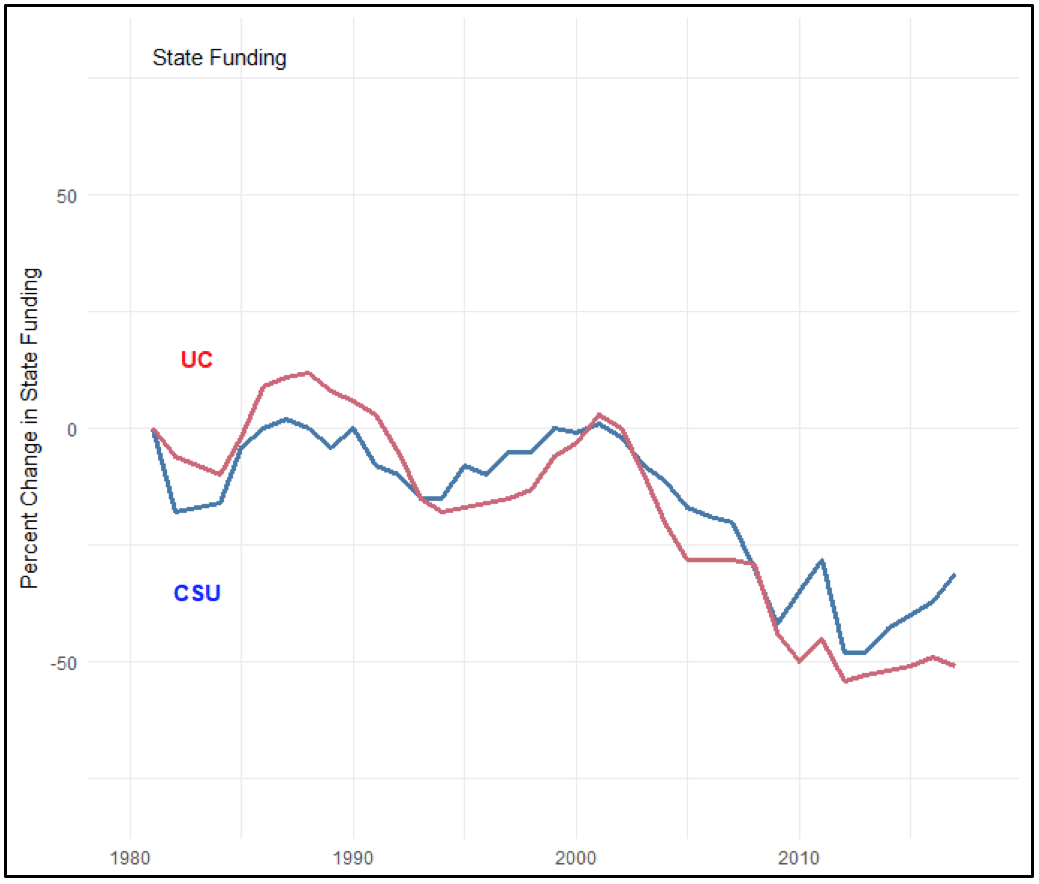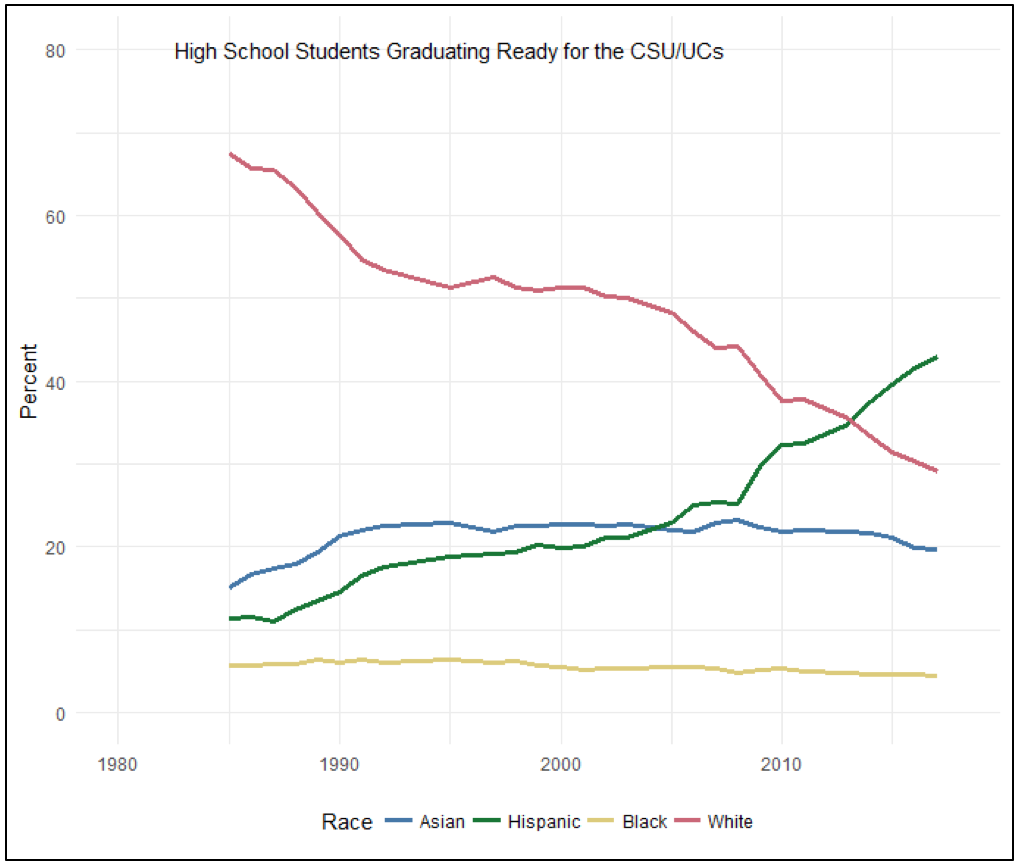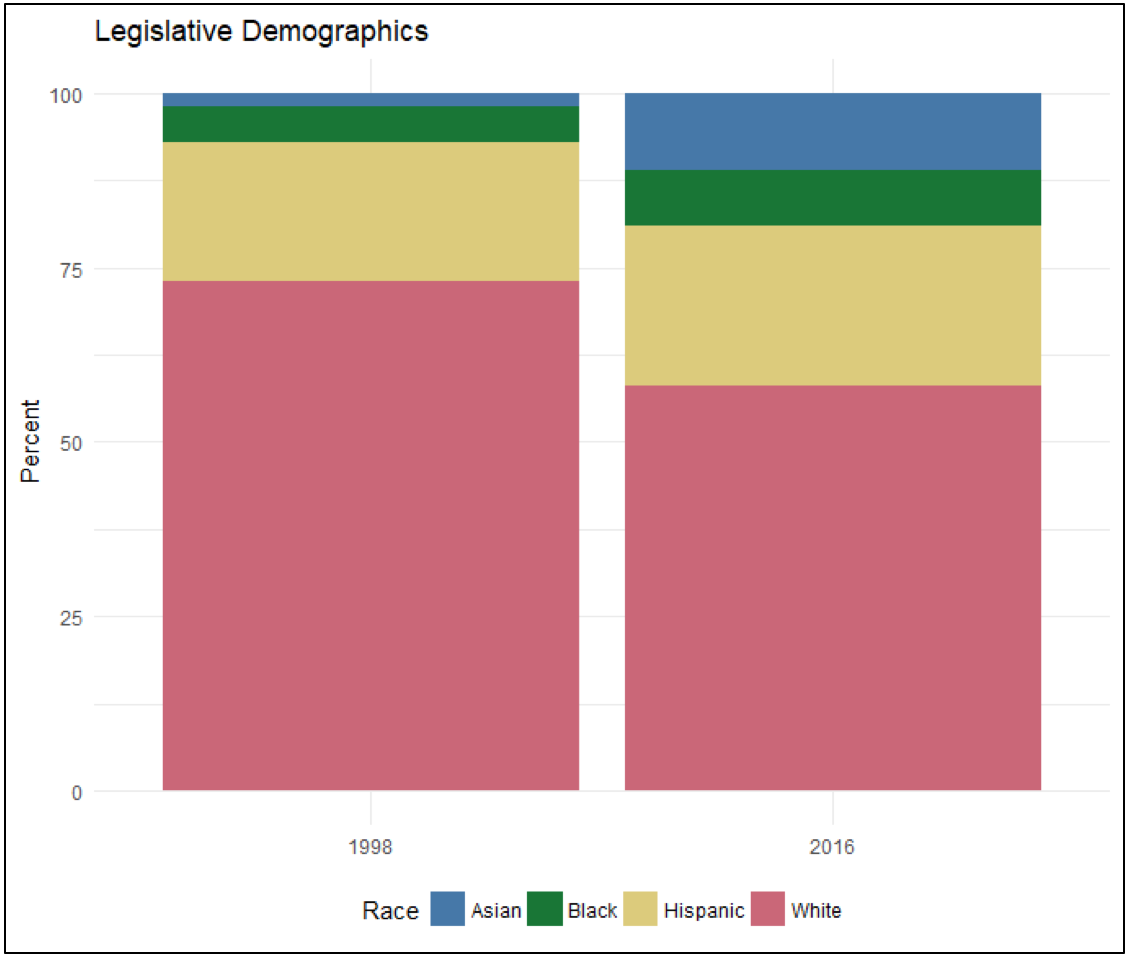
Disinvest
Disinvest
By Deb Niemeier
As we ease out of the California budget season, it is useful to reflect on where the UC/CSU’s stand in terms of state investment. This year the legislature invested one-time as well as continuing funds in both the UC and CSU. However, as many others have elaborated upon, small adjustments are simply insufficient to reverse long-term disinvestment. 
California Budget Policy along with others have estimated that since the 1980s state funding for the UC has fallen by 51% while enrollment has jumped by 113%. The CSU system funding has fallen by 26%, with enrollment growth of 68%. As anybody can recognize, it would be impossible to make up for that degree of funding losses paired with this enrollment growth solely through efficiencies.
The public university system used to work like this: we all paid in a little bit so that whoever had the high school qualifications to go to university could do so at a reasonable cost. The UC/CSUs built a strong middle class on this proposition. Now our state’s higher education funding system works like this: we all pay a tiny amount so that whoever wants to go to college should be prepared to largely pay their own way. A social good has become an individual privilege.
Under this new model, we have replaced eligibility and opportunity – reasonably fair criteria – with “pay for it yourself”. In other words, we have made college a luxury, and with that luxury, if you can afford it, comes higher lifetime wages and all of the accompanying benefits.
Regardless of the causes, the result of disinvestment today is more costly education and a deeply weakened university infrastructure most keenly felt by its students: buildings that leak, unusable labs, too few classrooms, campus housing shortages, seriously outdated equipment, and ever-increasing tuition.
The student population ready to enter the UC/CSUs has also changed during this 30-year period of disinvestment. In the early 1980s, the percent of high schoolers who had taken all the required courses to enter the UC/CSUs was largely white. Today, the proportion of Hispanic students ready to enter the UC/CSUs far exceeds the proportion of white students. It is their path into the secure middle class, easily available to the students of a generation ago, that has been made into a luxury difficult to afford.
California does not have the option of investing in higher education only for those who can afford it, particularly in STEM. The Bureau of Labor Statistics forecasts that California will be home to the largest STEM workforce in the country by 2022, and in order to meet that demand, we need lots more people of all colors graduating with STEM degrees. While funding for higher education certainly has to compete with many other needs, but the degree to which we have compromised funding for these students defies imagination. Yet, here we are, but there is hope.
Responsibility for investing in the future middle class of California belongs to everyone. Past legislators have neglected to prepare UC/CSUs for the students of the future. With one of the most diverse legislature the state has ever seen, a greater range of perspectives is likely to be present. It is time to invest in our minority-majority student population the same way we did for the students of the 60s and 70s. This is the way for California’s middle class to become diverse as well as dynamic over the coming decade.
--------------
The Blog has an Editorial Board responsible for the quality of information and content development.
